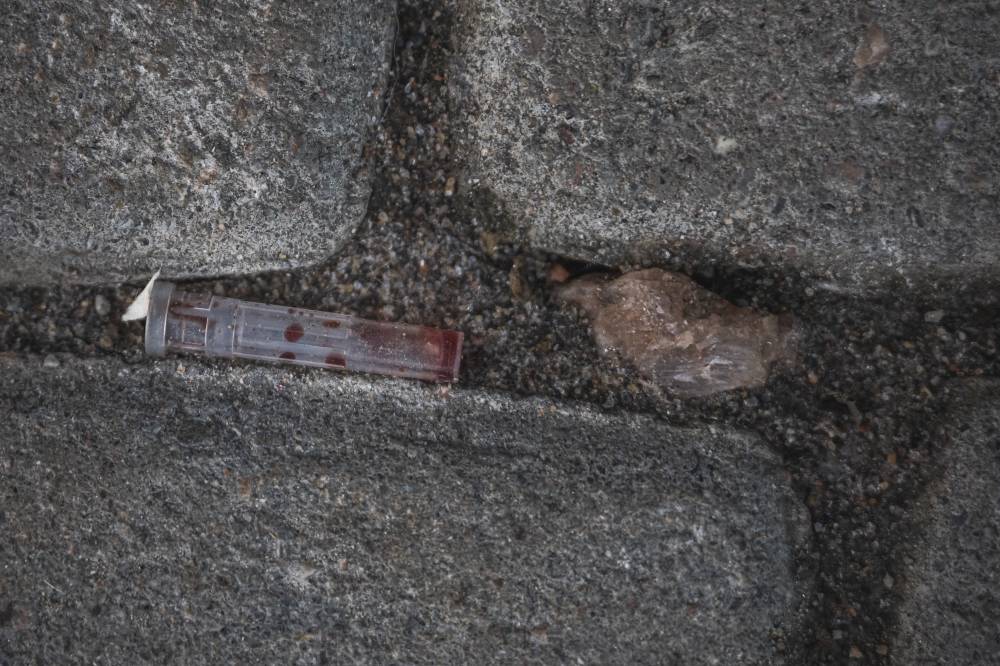Fears for the future as drug deaths among young Finns soar

HELSINKI—At a popular meeting spot for substance abusers near central Helsinki, even the addicts warn that Finland has a spiraling drug problem, particularly among young people.
The situation had reached “a whole new level,” one man in his early 30s, who introduced himself only as Stefano, told AFP.
Government statistics lay bare the extent of the problem: a record 310 drug-related deaths in 2023, reflecting an upward trend since 2015.
Ninety-one deaths were of people under the age of 25, the highest ever in that age group and almost double that of the previous 12 months.

Only three other EU countries—Slovakia, Austria and Luxembourg—fared worse for drugs deaths of under-25s in 2022, according to the bloc’s drugs agency.
But Finland has the unenviable record of its users dying about 10 years younger than the average age for addicts in the bloc of about 40.
“The situation has become unbearable,” said Annuska Dal Maso, head of outreach work at the A-Clinic Foundation in Helsinki, which helps substance abusers.
Now, she and others worry about the expected arrival of harder drugs like the powerful opioid Fentanyl—and the system’s ability to cope.

Poor treatment
Buprenorphine, another opioid used as a painkiller as well as to treat addiction, has already been the most abused drug in Finland in the last 25 years, alongside amphetamines.
Both are often mixed with alcohol or other drugs, said Pirkko Kriikku, a forensic toxicologist at the Finnish Institute for Health and Welfare (THL).
“Buprenorphine is the one that is causing the highest number of deaths in Finland,” she said.
The increase in availability of drugs, poor treatment possibilities and youth mental health issues are behind the increase in deaths, THL chief physician Margareeta Hakkinen said.

“Young people in Finland are generally doing better than before, but for the young people who are not doing well the situation is getting worse and they may turn to drugs.”
Finns’ attitudes towards drugs have changed in recent decades. According to THL, only 6 percent had tried cannabis in 1992 but in 2022 the number had leapt to 29 percent.
Drugs can now be ordered “just as easily as you can order clothes,” Hakkinen said, including on encrypted messaging sites such as Telegram.
But, she added, only an estimated 30 percent of opioid abusers get treatment.

‘Just a matter of time’
“People are shuffled from one clinic to the next where they often have to queue for weeks before getting help instead of being treated in one place,” Hakkinen said.
She noted that two decades ago, Finland was ahead of the curve when it came to drug harm reduction “but now we are lagging behind other countries.”
To tackle the problem, the government has earmarked almost $11.6 million from next year to prevent drug-related deaths among young people.
Another 7.5 million euros is to be spent helping young people with substance abuse and violence problems.

The THL has meanwhile called for drug consumption rooms—supervised facilities providing safer conditions for people taking drugs—to be legalized.
It also wants easier and earlier access to treatment and measures to reduce the stigma around drug addiction.
Drug consumption rooms have yet to win political support, despite a 50,000-signature petition to the right-wing government calling for them to at least be trialed.
“I’m really worried because we are not prepared if a hard opioid hits our streets,” said Dal Maso, who submitted the petition.
AFP is one of the world's three major news agencies, and the only European one. Its mission is to provide rapid, comprehensive, impartial and verified coverage of the news and issues that shape our daily lives.

















